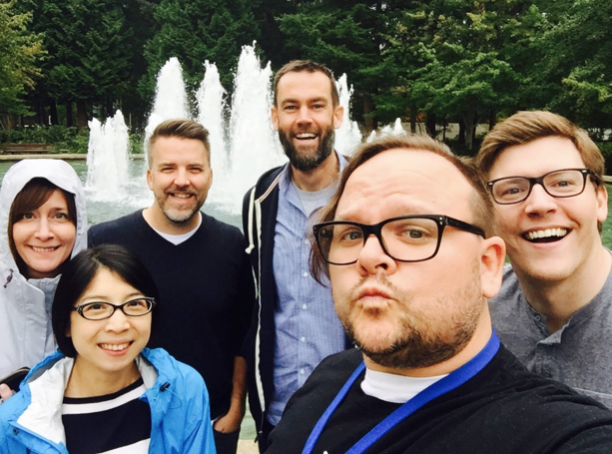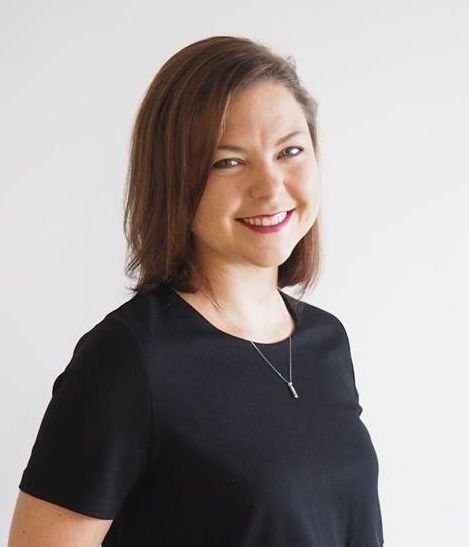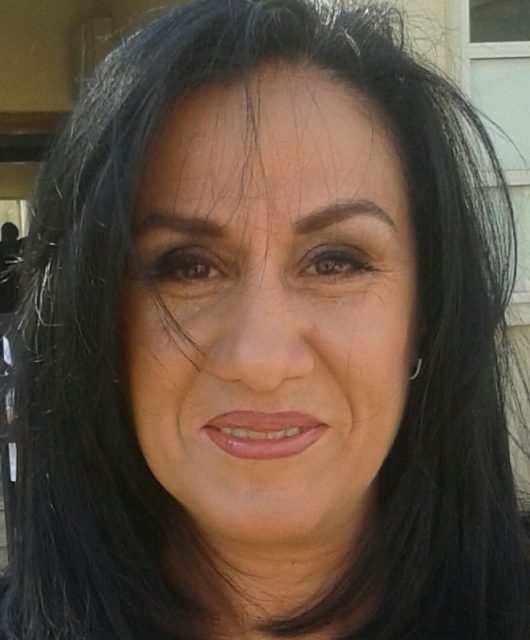Four Values To Foster Creative Culture
I’ve gotten a lot of requests to share the culture I try to cultivate when building and maintaining a studio. I’ve boiled it down to four core values that have served me and my teams well over the past years. Getting to these values was tough and born out of trial and error.
The first time I became a “Creative Director” was at the age of 27. I thought I was the shit. Then I realized I was pretty shitty at leading people and there was more to creativity than just creative. So I took a long hard look at myself, studied the best environment for creatives to bring their best work, and came up with the following list.
Value One: Come to Work⠀
When I explain this first value I usually say, “Think of the verb, not the noun. Work isn’t a place, it’s an action or even a state of mind.”
Here’s the backstory. I received this nugget of knowledge from my father-in-law when I was seeking advice about moving into the startup world in 2014. He owned his own physical therapy practice and had years of experience leading employees and helping them know his expectations.
“Douglas,” he said with his intense face that he usually has when saying something he cares about, “I told my employees to come to work. We are going to hustle; we are going to get things done. I needed them to understand that this place is not a place to just visit and waste time and eventually get to the work.”⠀
Oof, that’s good. I have found how easy it is to waste time and energy, so his words rang true.
After analyzing myself and observing others in light of this statement I found that the reason most people need to work into the night and into the weekend is because they waste so much time during the eight hours they are actually getting paid. Thus, sprang up my first value. The value of coming to work. ⠀
Paul Arden says it another way, “Energy. It’s 75% of the job.” Damn.

The culture of working hard and creating things daily has become a bedrock of stability for my team. We realize that when we are organized, prioritize, and get work done that we not only accomplish more for the business and for ourselves, but we also create a balance for our lives that allows us to have evenings and weekends to pay attention to the things outside of work that we care about. ⠀
I could keep writing on all the benefits of this cultural mindset. But I should stop. Maybe an epistle on this topic is good for another time. ⠀

Value 2: Feedback is a Gift
Relegating this value to creative reviews would be easy. It’s common to have work critiqued in a creative setting. In the context of a studio culture it has more to do with one’s attitude and ego. It’s more about growth and less about critique. Whether positive or negative, feedback is a gift because more than anything it shows our blind spots. We all have them, and we likely won’t grow if we don’t see them and address them. ⠀
This value was born for me about eight years ago. I was leading the Windows Phone (now defunct) creative team at the time. In a one-on-one with my director she gave me a tough message. “Doug, at this point you won’t get where you want to go in your career if you don’t fix two problem areas I see. One, you are not organized. Two, you are hot and cold when it comes to your energy. You need to be consistent. When you are hot everyone is wowed, but then you seem to disappear until the project is on fire. You need a consistent rhythm and pattern in your day. Your work is amazing, and people love you, but until you figure this out you will never become a senior leader.” Then she said this, “Feedback is a gift, Doug. You can either receive it or reject it. It’s up to you.”⠀
It took me a while to get over that. I was pissed. After about a week of stewing I realized my ego was getting in the way of a necessary change. She was right. Without that feedback I wouldn’t be where I am today. (Side note, I work for her again now. She recruited me to lead my current team.) ⠀
The expectation for my creative teams is to realize feedback is a two-way street. They can provide feedback to me. I’m not above having a blind spot.
Feedback should be immediate, direct, and clear. If the expectation is set in everyone’s mind that this is the way we operate, it creates a nicely humming engine of growth. The key to feedback is actually the next principle.
Is your ego in the way of your career? Something to think about.
Value Three: Be Kind
Have you ever worked in an environment that is toxic? I have, and it sucks. The work itself may be interesting and challenging, but who you work with/for and their spirit/attitude will make or break a team’s success.
I’m explicit about my expectation of kindness because it frames the way the team interacts with each other throughout the day. It cultivates a spirit of trust, generosity, concern, care, helpfulness, and an overall atmosphere of friendliness.
It’s not about asking the team to be saccharine. It’s extremely important that people show up as their authentic selves. Conflict does happen, but being kind gives a framework for handling that conflict. If the team knows that they aren’t going to get walked on, abused verbally, or personally attacked, then we are free to address the real problems and get back to work.

This value is also the secret sauce to making the first two values function. Coming to work (verb) is far easier when one knows people have their back and will not drag them down. Giving and receiving feedback is not like a bitter pill when it comes from a place of care and concern. ⠀⠀
Where did this value spring up? In my younger years I experienced the opposite culture. The ECD consistently verbally abused the team. The example he set for us was terrible. He allowed critiques to include personal attacks and it caused division and fear among my fellow creatives. Depression and anxiety were rampant among the team. It was a terrible time of life. He cared more about the work than the human. Kindness reverses that for me. People first, work second. Work will be forgotten in the end. ⠀
This is the touchy feely value out of the bunch. I get it. Just know that kindness creates a culture where people want to spend their time and energy, and where creative ideas can flow freely. ⠀⠀
Now go hug someone. Go on… 🙂
Value Four: Seek Diversity⠀
Seeking diversity became a value of mine when I looked in the mirror one day. What I saw was a white guy (see photo) who was raised in a relatively low-income class, worked hard and went on to college, got a good job, and now lives an upper middle-class lifestyle. (To be clear, I’m not downplaying my own experience, but I certainly have never lived another.) Then I thought about the work I do, which is creating brands and communications for a worldwide company. I thought to myself, “Damn, I’m in trouble.”⠀
In order to be relevant and grow it was imperative to get out of my comfort zone and seek variety. Me and my singular viewpoint was not good enough to meet the global marketplace of ideas. ⠀
When I talk about this with the team it really translates to hiring for diversity and creating a platform where diverse thought can be expressed without judgement. For my team this is primarily practiced in the critiques. I’ll give an example. Just a few weeks ago we were looking at work entitled “Factory of the Future” a thought leadership book from Microsoft that my team was executing. We reviewed around 20 different covers. I singled out around five and was honing in on one when a member of the team called out something glaring, “If we are really talking about a factory of the future I think we have an opportunity to represent women in an equal light. The future factory should signal not what we see now, but what we should be seeing. This is the reason I think the one with the empowered woman on the cover is the right choice.” All the concepts were equal in executional excellence, but having her viewpoint actually made the choice easy. Done.
So, don’t be shy, eat a little humble pie, and seek diversity. See through the eyes of someone else and build a team that is as diverse as the world around you. It makes the work fundamentally better. ⠀
A little suggestion to round this post out: learn who you are, study your team and what works, and live into it. The best kind of leadership is set by example.
Original content repurposed here from my Instagram feed. For daily content from me follow @dnmontague on Instagram
Although I work for Microsoft, views and thoughts here are my own.





